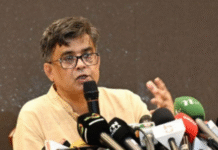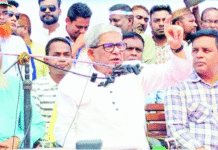 December 23, 2019
December 23, 2019

An awareness campaign urging motor vehicles not to honk in an area of the capital has drawn attention of many. It was launched on last Wednesday involving Rover Scouts in the task, besides the law enforcers. Lots of people thanked the authorities concerned for their action, though belated, on the urgent job of making a crucial area free of horns. The awareness campaign has been launched by the Ministry of Environment, Forest and Climate Change. The zone earmarked for keeping free of honking comprises the Zero Point, Paltan intersection and the Secretariat link road. Incidentally, the area is considered one of the busiest in the capital. Ever since the city has begun growing feverishly from the point of the now-defunct Nawabpur Level Crossing, it continued to watch hectic movement of all modes of transport. The number of vehicles continued rising, so did the intensity of conventional and hydraulic horns. It hasn’t taken long for the fast-growing bustling area to reach up to Press Club, cutting through Gulistan, Bangabandhu Avenue, the GPO area and the Secretariat.
The zone which has been selected by the Environment Ministry as a target area for freeing it of honking is viewed as a nerve-centre of the government, the Secretariat being the chief focus. The area, indisputably, deserves special attention, and this may continue to be so for considerably a long time. The Secretariat stands for the nation’s government, its policymaking and all administrative activities. The surroundings of few areas in Dhaka, thus, can warrant the status of being strictly horn-free. Given the large area’s non-stop hustle and bustle, attaining the designated goal may prove a challenging task. But it is not impossible. What is needed in the execution of the plan to make the zone a no-horn area is stringent measures; a similar need is warranted for increasing awareness of the people.
Dhaka has already earned the sobriquet of a city with one of the worst air qualities in the world. Its latest position in air pollution is nothing unusual, as the disgraceful status visits it intermittently on the global index. Given the reckless traffic movement, especially of buses, gridlocks etc, the city’s emergence as one with dreadful noise pollution is not surprising. It has been enlisted repeatedly on a number of environment-related indices as one of the errant cities, not excluding high noise pollution. Motor-vehicle horns, especially the hydraulic ones, add greatly to urban pollution.
Like many countries, Bangladesh observes the International Noise Awareness Day every year. That the exercise is merely ritualistic becomes clear from a grim fact. A Department of Environment (DoE) study says, in many parts of Dhaka the average sound level is 80-110 decibel (dB). The areas include schools, hospitals and residences. According to a WHO study, Dhaka’s dB level is “twice the maximum noise level that can be tolerated by humans — 60dB — without suffering a gradual loss of hearing.” In such a situation, calling the country’s capital a city just affected by noise pollution is understatement. The city’s noise level is deteriorating fast with the addition of newer sources of dreadful noise. Nowadays, the previously quiet neighbourhoods are also plagued by noise pollution, thanks to the traffic jams that have long made the narrow alleys virtually dysfunctional. The culprit is the drivers’ tendency to force their way through the gridlocks by honking. A vital point arises here: Should motor vehicles stop honking altogether as the campaign slogan disseminates? In fact, it is the unnecessary honking which should be discouraged.









